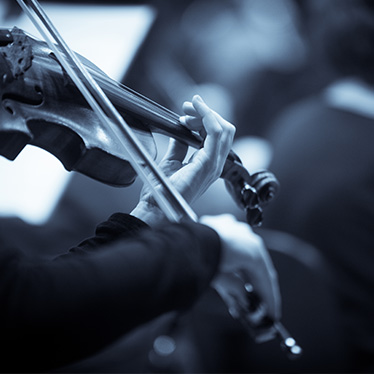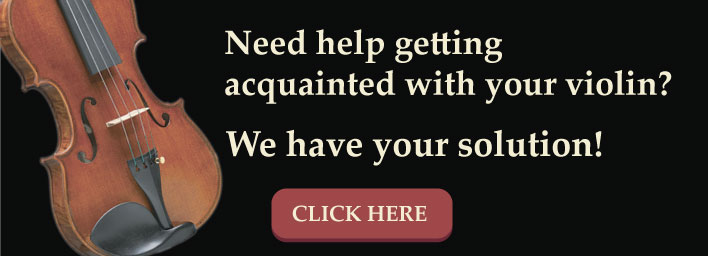Violin Bowing Technique Exercises

Bowing technique is as much about the health and wellbeing of your body as it is about sound. In addition to muddying up the sounds you create with your violin, poor bowing technique takes its toll on your shoulder, arm, elbow, wrist, and hand – eventually leading to injury.
Visit, Give Your Bowing Arm a Break, and check with your instructor if you experience chronic aches, soreness, or discomfort in your bowing arm.
Incorporating the following violin bowing technique exercise into your daily warmups and practice times will keep your bowing in line – literally.
Activating motion from the bow wrist
Have you ever had the feeling that your perfectly-functioning bowing arm has suddenly seized up and is moving in slow motion? You’re not alone. It’s especially noticeable when you need to play double note passages without losing momentum. If you’re anchored in your body, you’ll recognize that the slowdown is most likely due to stiffness in the wrist, overusing the elbow/shoulder, which leads to stiff bowing.
First, play the piece with single notes at the desired tempo to make sure your left hand is in order. Put your bow down and sit at a desk or table. Using your right arm (or left if you’re a left-handed player), make a loose fist and “knock” the same rhythm of your double note passage onto the table from the wrist. Knock gently, no need to pound – and keep that wrist relaxed.
Now, pick up your bow and play the same passage again, utilizing the gentle and fluid “knocking” motion from the wrist. Let go of any tension in the elbow or shoulder. Notice the difference? That's a simple way to re-boot bowing arm muscle memory.
Thibaud exercise for better bowing control
Does your bow have a tendency to be crooked or shaky while you’re playing? The well-known Thibaud Exercise is the answer. We ask much of our bowing hands. They must gently hold the bow without too much strain or pressure on the frog end, while simultaneously keeping track of what’s happening at the tip.
The Thibaud exercise focuses on the balance between relaxed but strong bowing, including a “gluey” bow hold. Playing a single note, you perform a short up bow at the very extreme end of the frog, and then a short down bow from the extreme tip.
Your bow shouldn’t touch the strings in between these two motions, and your arm, elbow, and wrist should move fluidly. There shouldn’t be any bounces or scratching of the bow on the strings. Once you’ve nailed it, increase the tempo and practice the Thibaud exercise across each string.
Go thumb-less
It seems like the thumb is necessary to protect the bow from gravity, right? But you’d be amazed to see how adeptly great bowers are at holding their bow without the thumb. This is an excellent way to get that “gluey” bow hold we mentioned before.
At first, hold the bow while seated on a couch or bed (soft landing if you drop the bow). Once you’ve achieved your version of “the perfect, relaxed hold”, remove your thumb. Keep practicing using proper bow hold techniques, and you’ll be delighted to see that the bow remains in place with the fingers only. It feels miraculous.
Now, take that exercise a bit further. Place your bow on the D or G string toward the extreme frog end of the bow (flat hairs). Once positioned, remove your thumb, lowering it near or below the frog – keeping the weight of the bow focused on the lower portion of the bow. Gently roll the bow across the strings without the thumb, using a stationary roll, and experience how little grip is actually required to move the bow across the strings.
We also recommend reading, Different Bowing Techniques For the Serious Violinist, to put your newly improved bowing to the test. Don’t forget to practice in front of a mirror, so you remain visually present with your brain, body, and bowing arm.
This article was sponsored by Thomastik-Infeld


